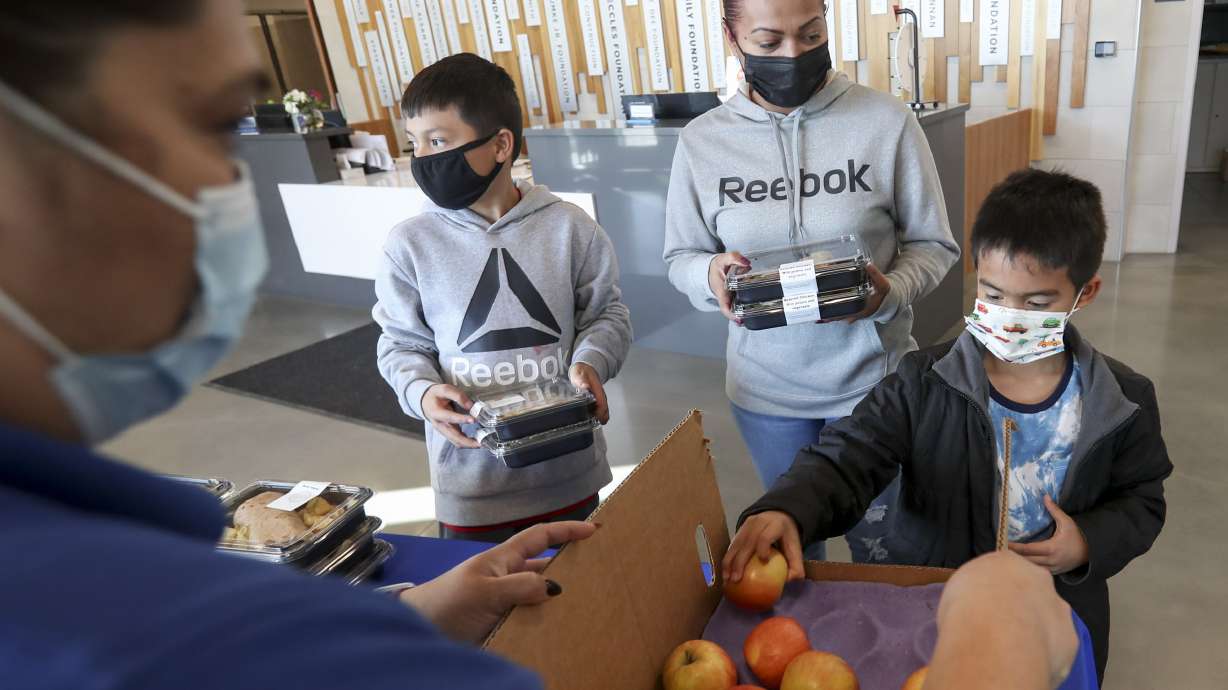Estimated read time: 3-4 minutes
This archived news story is available only for your personal, non-commercial use. Information in the story may be outdated or superseded by additional information. Reading or replaying the story in its archived form does not constitute a republication of the story.
SALT LAKE CITY — Like many Utah parents, Heidy Melgar has faced increased stress trying to provide for her family during the pandemic.
When she got COVID-19 three months ago, things got even more difficult for the single mother of a 7-year-old and 10-year-old.
"And that basically brought my situation to being backed up on my bills, and I've been trying to get groceries on the table for the children and just making sure I'm able to stay where I'm living at right now," Melgar said.
According to Gina Cornia, executive director of Salt Lake City-based Utahns Against Hunger, food insecurity over the last year has doubled. In February 2020, the U.S. Department of Agriculture calculated that 1 in 12 Utah households were experiencing food insecurity. June's rate was calculated at 1 in 6 households
Although the greatest need occurred during wintertime, now 18.8% of Utah households struggle with putting food on the table, Cornia said.
"And when you look at BIPOC families (Black, Indigenous and people of color), those almost double again. For Black families, it's 41% (with food insecurity). For Latinx families, it's 31%. So, you know, our immigrant households and our refugee families are the ones who are most likely to experience food insecurity," Cornia said.

But for some, emergency help is on its way as $45 million in Pandemic EBT assistance — which provides money directly to families to purchase groceries — will start hitting the state on Wednesday.
Kathleen Britton, with the Utah State Board of Education, said families with children in the free or reduced-cost school meal program will be eligible if their kids' schools were in virtual or hybrid formats, or if they were out of school and not getting meals for at least five consecutive days during the 2020-21 school year.
Those who aren't already in the free and reduced-price school meal program, if eligible, can sign up through their schools by May 10 and receive Pandemic EBT funding for the 2020-2021 school year. Eligibility information is found at benefits.gov/benefit/1991.
"We ask that schools and parents be patient as we roll this out, since it is a difficult process. in gathering this data and sorting through it to make sure all our students receive the benefit that they need," Britton said.
For families who qualify for the Pandemic EBT funding and who are already on the Supplemental Nutrition Assistance Program, also known as SNAP, the money will automatically be added to their SNAP cards. Those who aren't on SNAP will have an EBT card sent to them.
Parents with children already on the free and reduced-price school meal program are urged to check with their school administrators to confirm their eligibility is up to date and active by May 10, the pandemic program enrollment deadline.
Utahns Against Hunger believes people should be able to purchase the food they want to eat. Programs like Pandemic EBT and SNAP allow them to choose their food. Emergency food pantries are important but "can only fill part of the gap," according to Cornia.
The new funding "gives families additional resources to ensure they can purchase food that they need. Benefits can be spent at any grocery store that accepts SNAP as well as at farmers markets," Cornia said.
The program lets families buy food "at the same stores where they usually shop," she said.

In August, the federal government rolled out its first Pandemic EBT program, which brought $50 million in food assistance to Utah families, Cornia noted. In fall, 160,000 students were participating in the free and reduced-cost meal program, but now, Cornia said advocates believe that even more families are in need.
The dollar amount each family receives will vary based on their school situations, said Muris Prses, with the Department of Workforce Services. Payments will be retroactive from the beginning of the school year and will be sent in lump sums over the next several months.
For more information, visit jobs.utah.gov/pebt.









